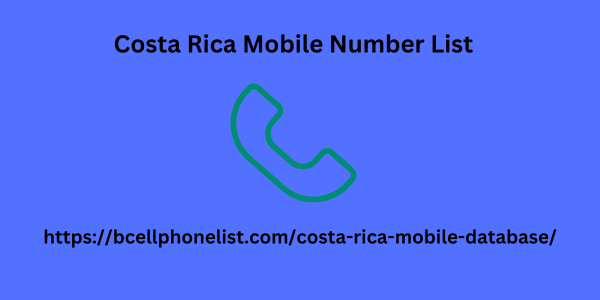Post by account_disabled on Mar 6, 2024 7:14:41 GMT 1
In the ever-evolving physical and digital retail landscape, email has become an increasingly important “detail” in the marketing approaches of retailers large and small. Innovative retailers understand that the lines between their online and offline outlets have blurred and work together to achieve the same goals: positioning the right products in front of the right customers at the right time. They also understand that digital marketing tools such as email are no longer exclusive to online stores but can benefit the entire organization. Therefore, when a channel is so important, it is vital to invest in a strategy that guarantees that campaigns are generating the maximum possible impact. Ironically, since this is a very profitable channel, we may tend to under-invest in it, focusing on optimizing more expensive and less profitable channels. However, optimizing this channel can be the key that opens many other doors. The mantra to follow is very simple: Send the right email to the right person at the right time.
From here, optimization begins with simple adjustments to lists and campaigns, before moving to more sophisticated strategies, focused on the specific needs of individual subscribers, rather than general mass messages. To carry out email campaigns, keep the following tips in mind: Marketing List Segmentation Segmentation is the process of dividing and Costa Rica Mobile Number List grouping email subscribers into smaller groups based on specific criteria, to facilitate list management, in order to create relevant information and promote the right products. Segmentation turns email into a blunt instrument through a focused and targeted strategy. Lists can be segmented in many ways, depending on the objectives of each moment. The most obvious way is based on previous purchases, for example, it wouldn't make much sense to send PlayStation-related emails to someone who just bought an Xbox. With segmentation we seek both to avoid recipient fatigue and to send highly relevant communications.

Every email sent that doesn't really involve a subscriber puts the future relationship at risk. Segmentation allows you to send multiple emails at the same time, without putting undue pressure on the list. Let's look at some of the main segments that can be created: l Demographic . Includes characteristics such as age, sex, location… l Record source. Group them based on how they were added to the list. If someone signs up in-store or at an event, you may want to send them a discount for online purchases. l Interests and preferences. This is one of the main features to take into account because it allows highly targeted campaigns based on the information we have obtained, either from the user's responses or their behavior (products they have recently viewed or saved in favorites, for example). l Shopping history. This information allows you to send different types of emails such as recommendations for complementary products or recharges, depending on previous purchases. l Inactivity.
From here, optimization begins with simple adjustments to lists and campaigns, before moving to more sophisticated strategies, focused on the specific needs of individual subscribers, rather than general mass messages. To carry out email campaigns, keep the following tips in mind: Marketing List Segmentation Segmentation is the process of dividing and Costa Rica Mobile Number List grouping email subscribers into smaller groups based on specific criteria, to facilitate list management, in order to create relevant information and promote the right products. Segmentation turns email into a blunt instrument through a focused and targeted strategy. Lists can be segmented in many ways, depending on the objectives of each moment. The most obvious way is based on previous purchases, for example, it wouldn't make much sense to send PlayStation-related emails to someone who just bought an Xbox. With segmentation we seek both to avoid recipient fatigue and to send highly relevant communications.

Every email sent that doesn't really involve a subscriber puts the future relationship at risk. Segmentation allows you to send multiple emails at the same time, without putting undue pressure on the list. Let's look at some of the main segments that can be created: l Demographic . Includes characteristics such as age, sex, location… l Record source. Group them based on how they were added to the list. If someone signs up in-store or at an event, you may want to send them a discount for online purchases. l Interests and preferences. This is one of the main features to take into account because it allows highly targeted campaigns based on the information we have obtained, either from the user's responses or their behavior (products they have recently viewed or saved in favorites, for example). l Shopping history. This information allows you to send different types of emails such as recommendations for complementary products or recharges, depending on previous purchases. l Inactivity.
